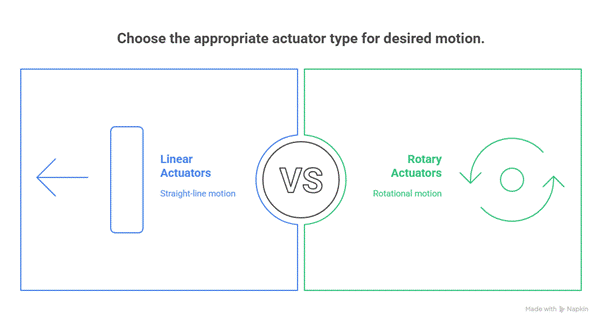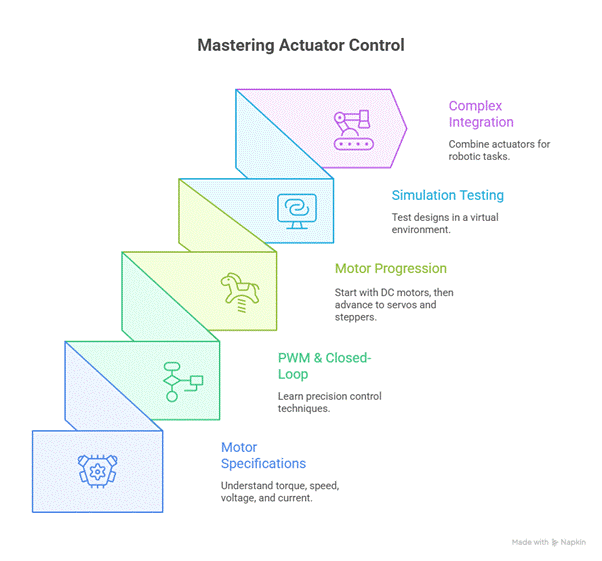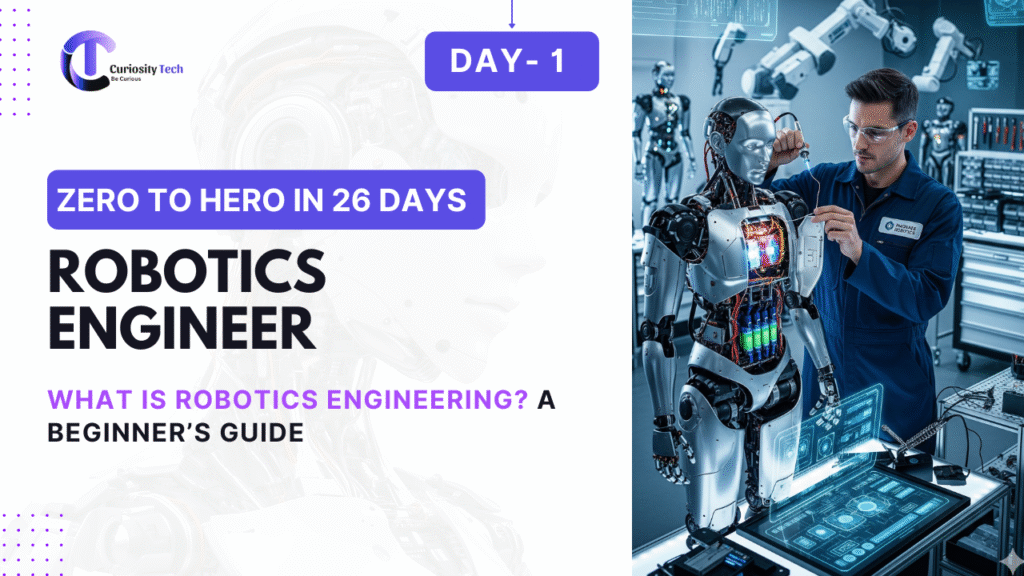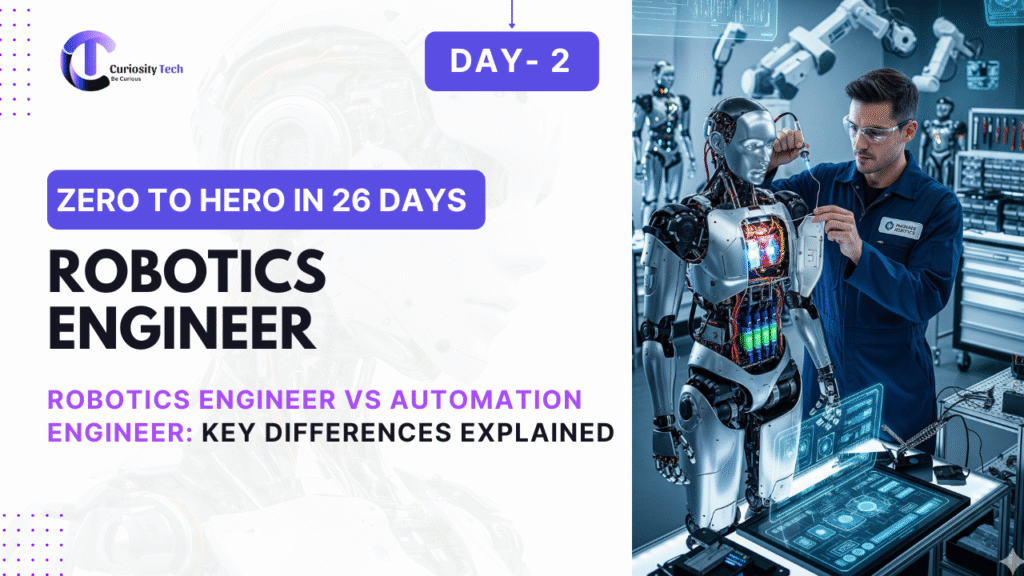Introduction
Actuators and motors are the muscles of a robot, converting electrical signals into mechanical motion. Understanding actuators is crucial for robotics engineers because they determine robot speed, precision, and load-handling capabilities.
At CuriosityTech.in, learners can explore detailed tutorials, hands-on projects, and simulation exercises to design, control, and optimize actuators for real-world robotics applications.
1. What are Actuators?

2. Common Types of Motors Used in Robotics
| Motor Type | Working Principle | Typical Use Case | Pros | Cons |
| DC Motors | Converts DC voltage to rotational motion | Wheels of mobile robots | Simple, low-cost, easy to control | Limited torque without gearbox |
| Servo Motors | Feedback-controlled rotation | Robotic arms, pan-tilt cameras | Precise angle control, high torque | Expensive, limited rotation range |
| Stepper Motors | Rotates in discrete steps | 3D printers, CNC robots | Precise position control, repeatable | Slower speed, torque drops at high RPM |
| Brushless DC Motors (BLDC) | Electronic commutation for rotation | Drones, electric vehicles | Efficient, long lifespan, high power | Requires electronic controller |
| Linear Actuators | Electric motor drives linear screw | Sliding doors, robotic grippers | Converts rotary to linear motion | Limited speed and stroke length |
3. How Motors Work in Robots
A. DC Motors:-
- Simple rotation based on applied voltage.
- Speed control using PWM (Pulse Width Modulation).
- Direction control via H-Bridge circuits.
B. Servo Motors:-
- Controlled via PWM signals specifying the target angle.
- Internal feedback ensures the motor reaches and holds the desired position.
C. Stepper Motors:-
- Moves in discrete steps using electrical pulses.
- Can achieve precise rotation without feedback.
- Common in positioning tasks like robotic arms or CNC tools.
Diagram Idea:
4. Actuators in Robotic Systems
- Mobile Robots: DC motors for wheels, encoders for speed feedback
- Robotic Arms: Servo or stepper motors for joint rotation.
- Grippers: Linear actuators for gripping and releasing objects.
- Drones: BLDC motors for propeller rotation and stability.

Hierarchical representation of a robot showing motor-actuator mapping: – Wheels → DC Motors, Arm Joints → Servo Motors, Gripper → Linear Actuator, Flight → BLDC Motors.
5. Controlling Motors
1. PWM Control
- Modulates voltage to control motor speed.
- Works for DC and servo motors.
2. Encoder Feedback
- Measures rotation or position.
- Enables closed-loop control for precise movement.
3. Motor Driver Circuits
- Interface between microcontroller and high-current motors.
- Examples: L298N for DC motors, TB6600 for stepper motors.
Table: Motor Control Techniques
| Motor Type | Control Method | Feedback Mechanism | Accuracy |
| DC Motor | PWM speed control | Encoder optional | Moderate |
| Servo Motor | PWM angle control | Built-in potentiometer | High |
| Stepper Motor | Pulse step control | Open-loop or encoder | High |
| BLDC Motor | ESC with PWM / CAN control | Hall sensors / encoder | High |
6. Beginner Project Example: Line-Following Robot
Objective: Build a mobile robot that follows a black line on a white surface.
Components:
- Actuators: 2 DC motors for differential drive.
- Sensors: IR sensors to detect the line.
- Controller: Arduino to process sensor input and send PWM signals.
Implementation Steps:
- Read Sensor Input: Detect line position relative to robot.
- Compute Motor Speed: Adjust left/right motor speed using PWM.
- Control Motors: DC motors drive robot along the line.
- Fine-tuning: Adjust PWM and sensor thresholds for smooth motion.
CuriosityTech.in provides schematics, Arduino code, and motor calibration tips for this project.
7. Tips for Mastering Actuators & Motors

Conclusion
Actuators and motors are the driving force behind every robot’s movement. By mastering the types of motors, their working principles, and control methods, robotics engineers can design robots that move precisely, efficiently, and safely. Platforms like CuriosityTech.in provide detailed tutorials, practical projects, and simulations that help learners transition from understanding theory to building functional robotic systems.



